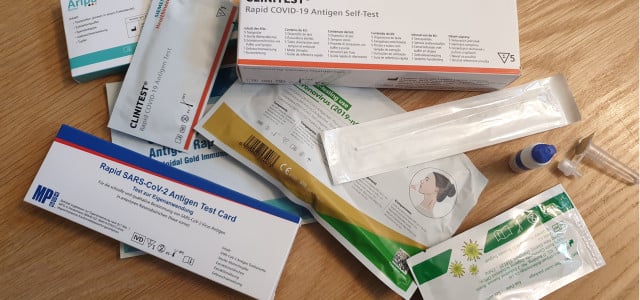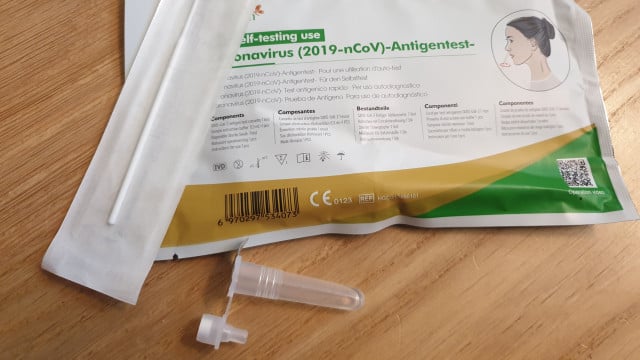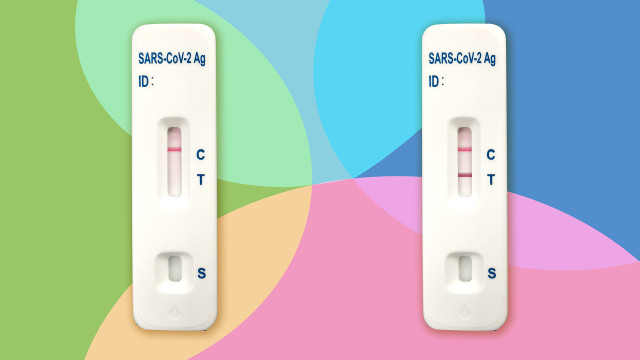
Corona self-tests have been with us for a good year and a half and are now part of everyday life. With the end of the free Corona citizen tests, people will be tested more often at home again, with a self-test. During the last corona infections among colleagues and friends, we found that there are still many unanswered questions about the rapid tests, and there are still uncertainties and application errors.
Since the beginning of July, the citizen tests have only been available free of charge in a few cases, a PCR test is not necessary in many cases – people are increasingly testing for the corona virus at home again using corona self-tests. Many are currently struggling with a corona infection and the questions that suddenly arise. We had to realize that although the virus and self-tests have been with us for what feels like an eternity, questions and uncertainties keep popping up. To ensure that the result of your quick test is as reliable as possible, we have summarized the most important questions here:
Error: Reading the result too quickly
There is one mistake you should avoid in any case: being too hasty about a negative test result. The control line often appears in a matter of seconds, one is tempted to be happy about the negative result and throw the test away immediately. But: The decisive line in the T-line (positive or negative) often takes much longer to be seen. Therefore, always wait the recommended time (usually 15 minutes). Both a test result read too early and one read well after the prescribed time can be erroneous.
1. Is a swab in one nostril sufficient?
Short answer: no.
Detailed answer: The following rule applies to rapid corona tests: As much secretion as possible should stick to the swab. The nasal swab tests for use at home therefore usually require a swab in both holes. According to ENT doctor Bernhard Junge-Hülsing, it could be a fallacy to just stick the swab in a hole. “As a result, you may not get enough secretion on the swab.” Ergo: the swab belongs in both holes.
2. Do I also have to read the instructions for what feels like the 100th test?
Short answer: Yes.
Detailed answer: As reluctant as you may be to read the answer right now: Yes, you should read the instructions for every test. Of course, this does not apply if you always use the same test from the same manufacturer.
The reason: There are a few different test procedures. There are tests for the throat and tests for the nasal cavity. The length of time the swab should remain in the solution varies. And some test instructions recommend blowing your nose thoroughly before the swab. The idea behind it: By blowing your nose, secretions and thus possible viruses from the lower nose and throat area should be blown further forward.
Tip: Many tests have instructions with pictures. If you look carefully, you can save yourself the long text version.

3. What do C and T mean?
Even if it were obvious: A red line at the “C” does not stand for Corona (and thus a positive result), but:
-
C stands for Control, ie control
-
T stands for test, which is the relevant digit for determining whether one is positive or negative.
In concrete terms, this means: If lines can be seen at C and T, the test was positive. If only C shows a line, the test is negative. If only T has a dash, it is invalid. If there is no line at all, the test is also invalid and should be repeated.
Important: If no dash appears at C, the test is not valid and invalid. You should repeat it.
4. What does a faint test line mean?
Short answer: A positive test result, ie you have been infected with Corona.
Detailed answer: The decisive line in the corona self-test (at T) is not always thick, bold and bright red, sometimes there is only a thin line in light pink. It makes no difference to the test result whether the T-strip is bright or only appears faint. A line is a line and means: You are most likely corona-positive. Only a PCR test can provide definitive certainty. When the corona infection fades away, a fading line can indicate that the viral load is decreasing.
5. What does a faint control line mean?
Short answer: An uncertain result. The best thing to do is to repeat the test.
Detailed answer: A very faint line on the control line (at C) of the test cassette is an indication that possibly little secretion landed on the swab. In this case, the risk of a false negative test result increases – i.e. the test comes back negative even though you are positive and possibly contagious.
According to Prof. Martina Prelog, specialist immunologist at the German Society for Immunology, a pale control line can also have other causes. For example, that the test was stored incorrectly or that there was not enough solution liquid.

6. Does it matter if I test in the nose or throat?
Short answer: no.
Long Answer: For tests specifically designed for the nose or throat, swabs should only be taken from the region specified in the instructions. This reduces the risk of an incorrect result.
7. Where should the self-tests be stored in the summer?
Short answer: Not too cold and not too warm.
Detailed answer: The box with the self-tests should be kept in the apartment, not too cold and not too warm. So neither in the fridge nor in the car in the blazing sun. Studies indicate that incorrect storage could falsify the test result.
“They can be stored normally at room temperature,” recommends ENT doctor Bernhard Junge-Hülsing from Starnberg. The temperatures at which the box with the test can be stored is usually stated on the packaging or at least in the package insert.
The important thing is that the tests should always be at room temperature when they are used – so if you have stored them in a cooler place, you should leave them on the work surface for a while and not use them immediately.
8. How deep do I have to insert the swab into my nose?
Two things are important when handling the swab: caution and feeling. During the self-test, the swab does not have to be pushed to the point where the nose meets the throat. Two to four centimeters deep in the nostril, that’s enough. And do it flat in the direction of the ear canal floor and not diagonally upwards – there is a risk of injury.
9. Do I have to do a PCR test if the rapid test is positive?
Short answer: no.
Detailed answer: It is not absolutely necessary to confirm a positive rapid test with a PCR test. However, there are still reasons to have a PCR test performed:
- Only a PCR test is really reliable.
- In order to issue a certificate of recovery, the infection must be proven by a PCR test. A quick test is not sufficient here. In order to get proof of recovery, a positive PCR test result must be presented to the pharmacy or doctor’s office.
- Many people are not aware that only the results of positive PCR tests are included in the official corona statistics.
- And: You can only warn your contact persons via the Corona-Warn-App if you have done a PCR test and it is positive.
10. Am I entitled to a free PCR test after a positive corona self-test?
Short answer: Yes.
Detailed answer: According to the Corona Test Ordinance, everyone with a positive rapid test is entitled to a free PCR test.
11. When is the best time to perform the self-test?
Short answer: any time of the day.
Long answer: You can take the test at any time of the day. However, the best time is shortly after getting up, because that is when the viral load is highest. According to the recommendation of the Federal Ministry of Health, you should neither eat nor drink half an hour before the test.
Note: In principle, self-tests are a good idea, even if we must never forget: A negative result in the self-test at home is not a free ticket. The rapid tests are not as reliable in their validity as a PCR test.
With material from the dpa.
Read more on Techzle.com:
- Corona summer wave: how useful is the fourth vaccination?
- Infection rates are picking up: What we know about the BA.5 corona type
- Loss of smell after Corona: You can do that